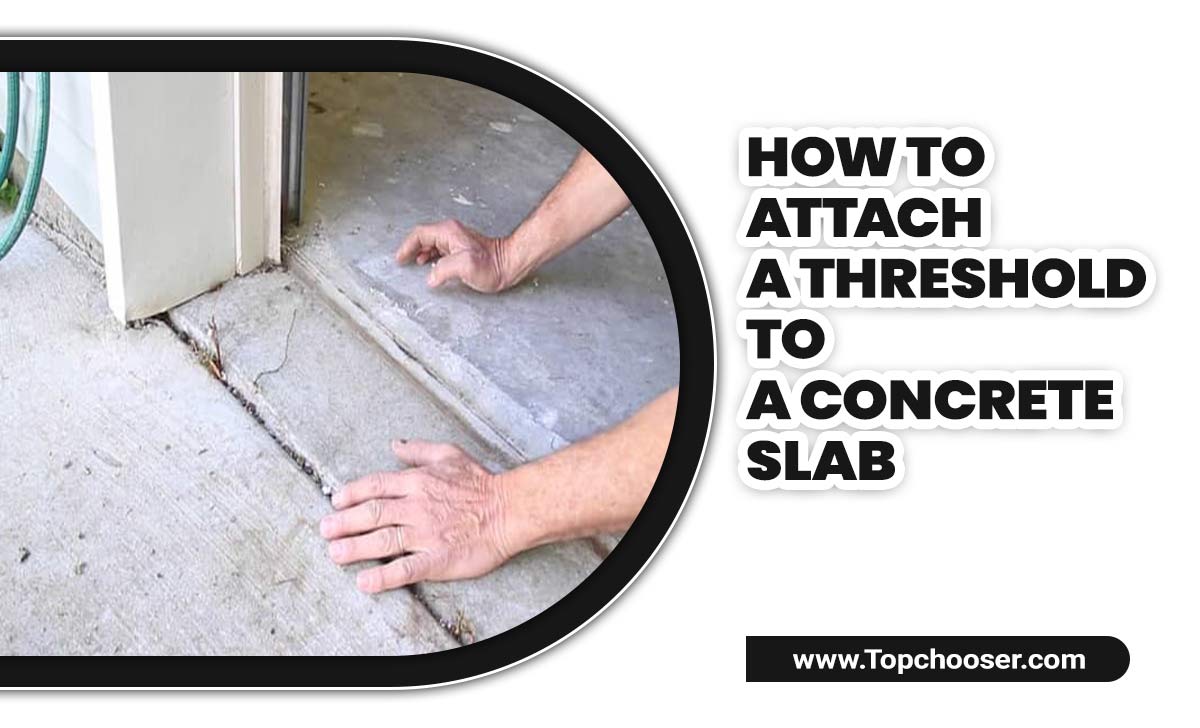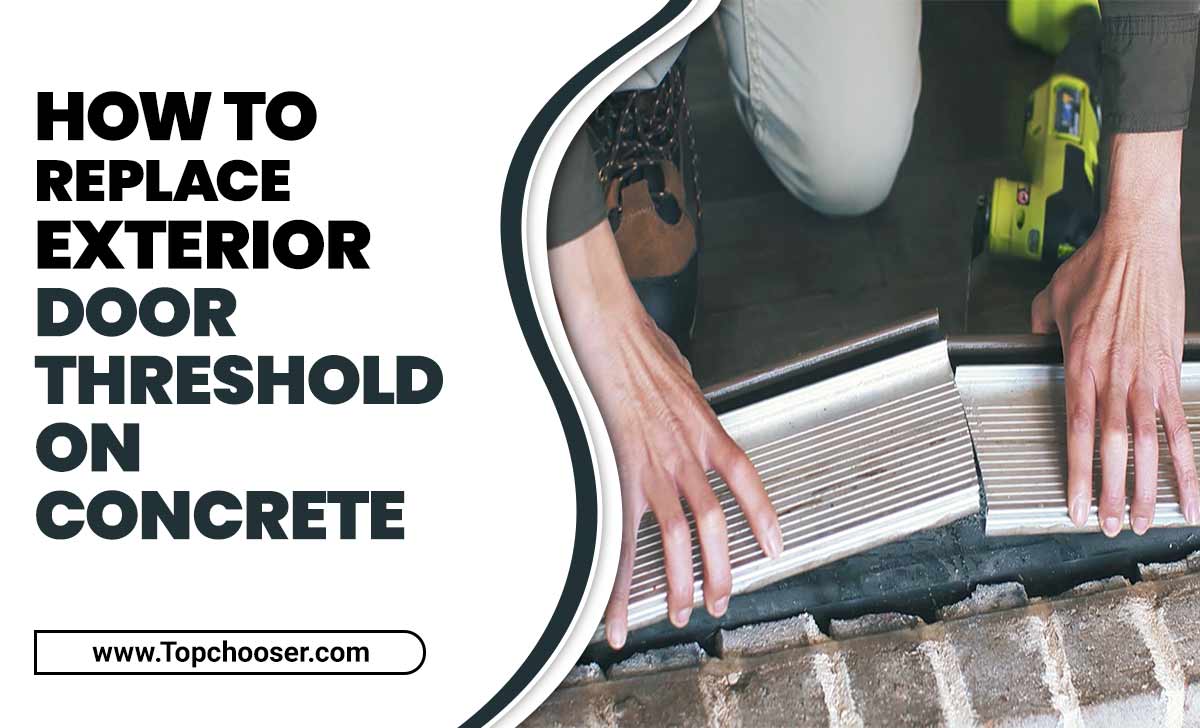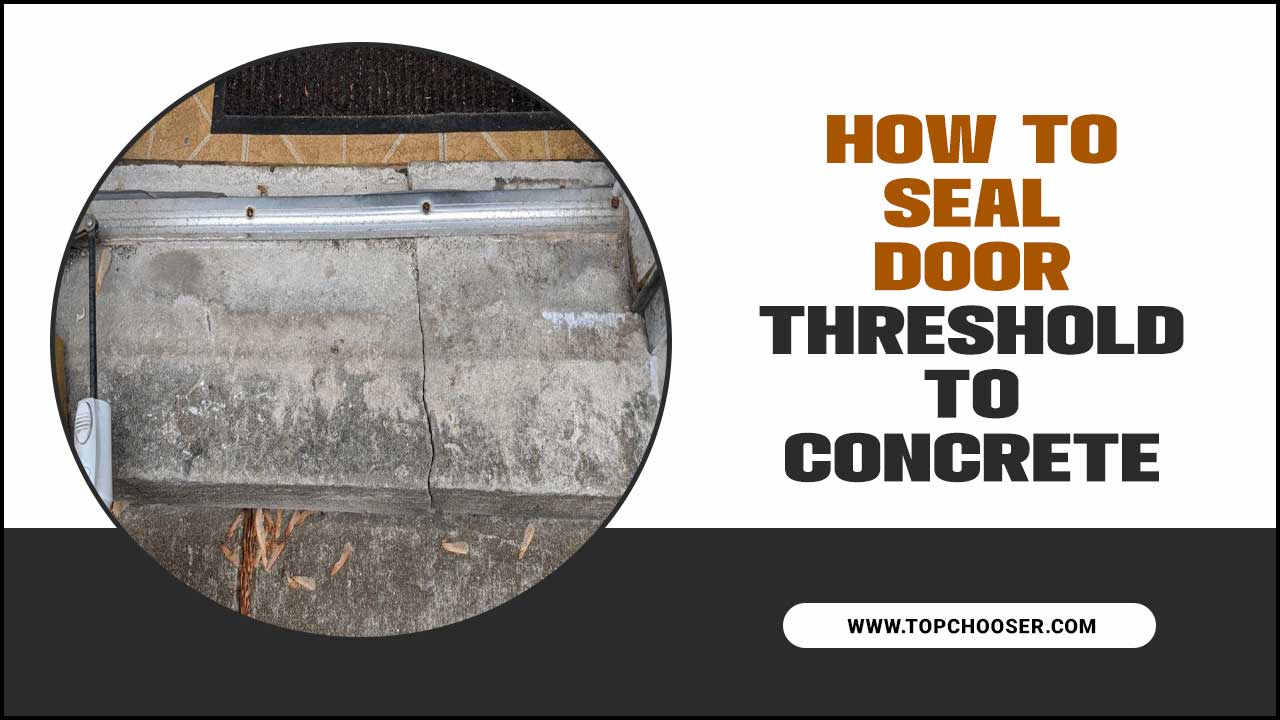As homeowners, the safety and security of our homes is of utmost importance. One crucial aspect of home security is ensuring that the doors are properly secured. However, finding the right method to secure the door can be challenging for those with concrete door thresholds. Concrete presents unique challenges for attaching or reinforcing door thresholds.
Here, we will guide you through step-by-step instructions on how to secure door thresholds on Concrete and concrete lock floors. We’ll cover everything from securing door thresholds to the tools and materials needed for the job and preparatory steps for installation and post-installation maintenance.

Tools and Materials to Secure Door Threshold on Concrete
Securing a door threshold on Concrete requires a few specific tools and materials. Having these tools and materials ready before you begin will make the process of securing your door threshold on concrete much smoother. Here are the items you will need for the job:
- Hammer drill
- Masonry drill bit
- Anchors and screws
- Threshold sealant
- Level
- Safety goggles and gloves
Effective Steps to Secure Door Threshold on Concrete
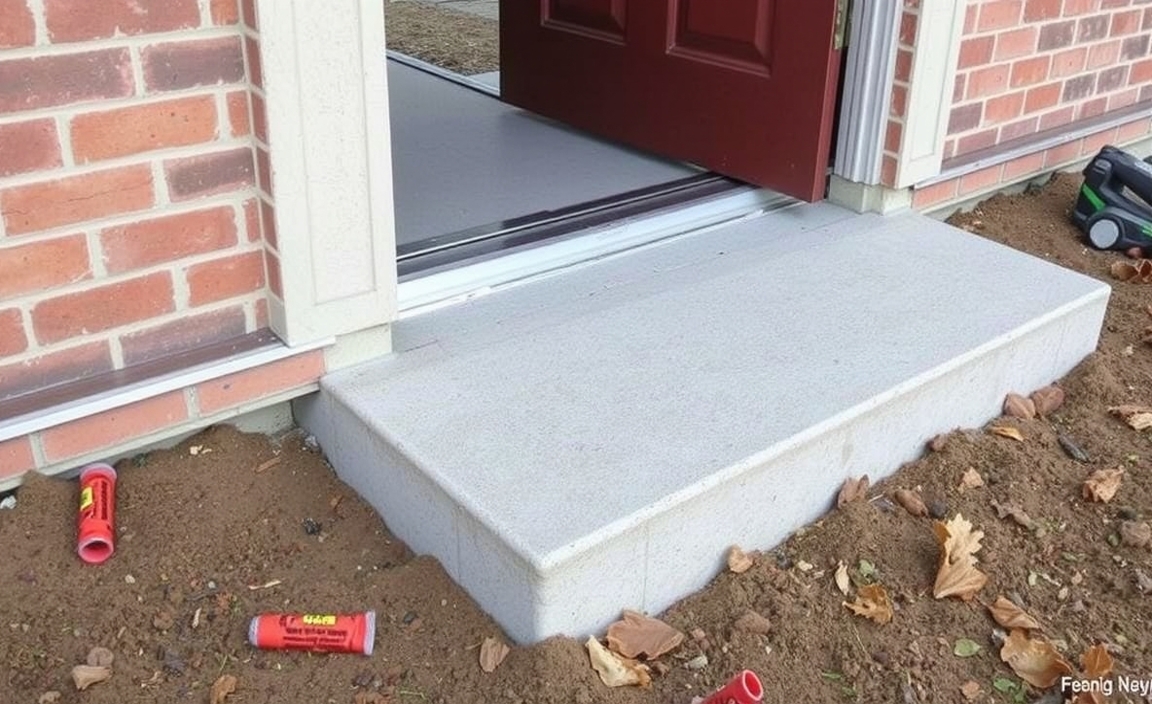
A secure door threshold is a crucial component in any building, providing a strong barrier against external elements and ensuring the safety and privacy of its occupants. However, installing a threshold on concrete can be a daunting task, as the material is unforgiving and can be difficult to work with. Here are some steps on how to secure a door threshold on Concrete.
1: Measure the Door Threshold
Before beginning the installation process, measuring the dimensions of the door threshold accurately is essential. Using a measuring tape, measure the Threshold’s width and length while considering any irregularities in the concrete surface. Recording these measurements to guide you during the installation process is important. Double-checking your measurements can help you avoid errors and ensure the installation is successful. Additionally, it’s a good idea to take note of any potential issues or obstacles that may arise during installation so that you can plan accordingly.
2: Cut the Threshold to Fit
When cutting a threshold to fit, using a circular saw with a masonry blade is recommended. Carefully cut along the marked lines to ensure a precise fit. Safety should be a top priority while cutting, so take all necessary precautions to avoid injuries. After cutting, inspect the Threshold for rough edges or splinters and smooth them out to prevent tripping hazards. Finally, double-check the threshold measurements against the door opening to ensure a perfect fit before installation.
3: Attach the Threshold to the Concrete
To attach the Threshold to the Concrete, begin by drilling pilot holes into the garage slab using a masonry bit and power drill. Position the Threshold over these hole diameters, aligning it with the door opening. Insert screws into the pilot holes and tighten them securely using a screwdriver or power drill. Check the alignment of the Threshold, making any necessary adjustments to ensure it is level and flush with the floor surface.
4: Secure the Threshold with Adhesive
For a secure bond, applying a substantial amount of adhesive to the bottom of the door threshold is crucial. You can achieve an even adhesive spread using a putty knife or caulk gun. Press the Threshold firmly onto the concrete surface once you have done that. Any excess adhesive should be wiped off before it dries. Following the manufacturer’s instructions for sufficient curing time after applying the adhesive is important. This will ensure a strong, long-lasting bond between the Threshold and the concrete surface.
5: Add Finishing Touches with Caulk and Sealant
To add the finishing touches to your door threshold on Concrete, apply a caulk line along the edges of the Threshold, ensuring you seal any gaps or cracks. Smooth out the caulk using a caulk smoothing tool or your finger. Next, the sealant protects the Threshold from moisture and potential water intrusion. Make sure the sealant covers the entire Threshold, including the edges. Finally, allow the caulk and sealant to dry completely before using the door.
The Importance of Securing Door Thresholds on Concrete
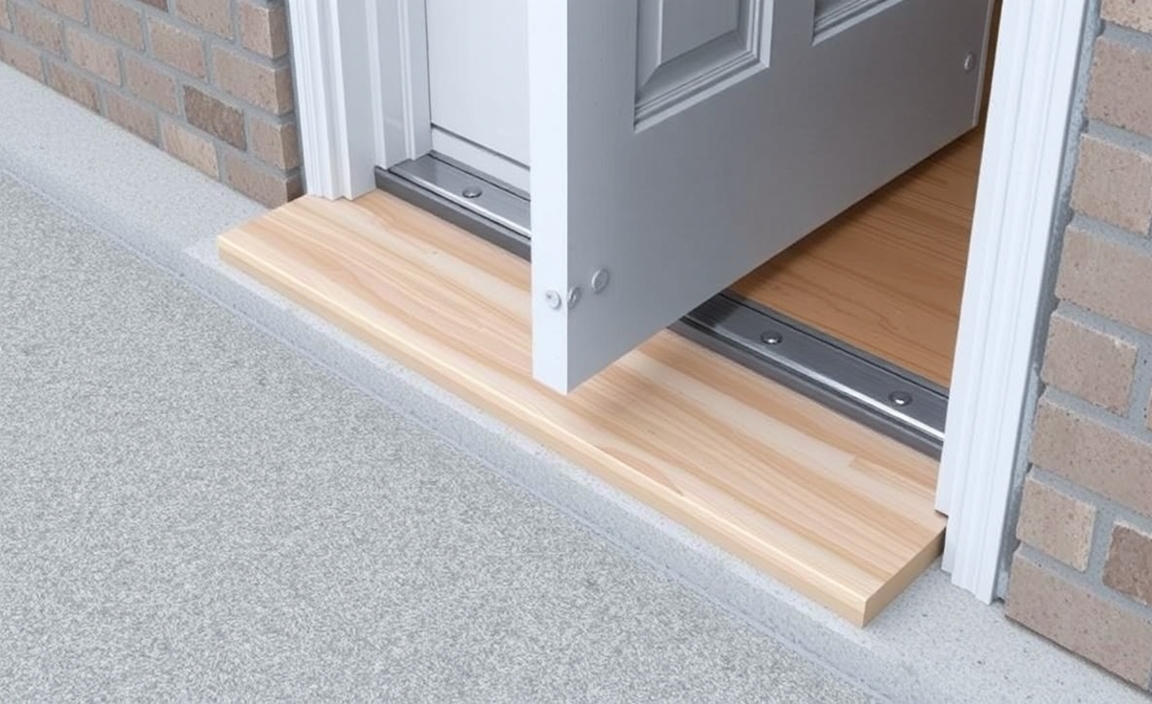
Securing the door threshold on Concrete is crucial for preventing moisture ingress and ensuring durability. It not only enhances security and prevents drafts but also helps maintain a consistent temperature inside the building. A secure threshold also acts as a barrier to pests, adding aesthetic appeal and providing smooth transition strips between rooms. You can ensure a long-lasting and effective solution by following proper installation techniques, such as using wood threshold thresholds, inches, and jambs.
Preventing Moisture Ingress and Ensuring Durability
A securely installed and sealed threshold is a barrier against moisture intrusion, preventing damage to the concrete patio slab and adjacent areas. Issues like mold growth or structural damage can be avoided by avoiding bulk water ingress. Furthermore, a durable threshold can withstand foot traffic and the elements. Regular maintenance and inspections help identify and address potential issues early on. This ensures the longevity and durability of the door threshold on Concrete.
Enhancing Security and Preventing Drafts
A properly secured threshold prevents unauthorized access and enhances security while creating a seal that minimizes drafts and maintains temperature control. Energy efficiency is improved by reducing drafts, resulting in lower utility costs. Moreover, secure thresholds provide sound insulation, reducing noise transfer between rooms. Regularly checking and maintaining the Threshold is essential to ensure its effectiveness. Adding an extra layer of security and preventing drafts are important considerations when securing a door threshold on Concrete.
Post-Installation: Finishing and Maintenance
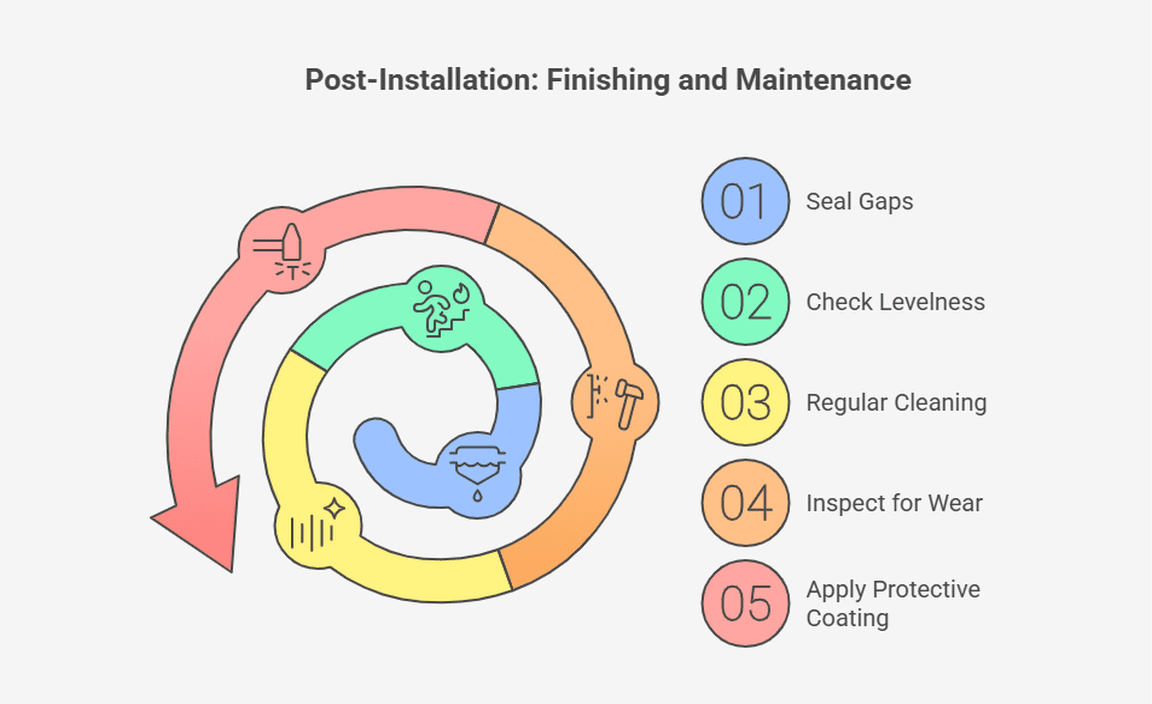
Once you have successfully installed a door threshold on Concrete, there are a few important steps to take for finishing and maintenance. Following these post-installation steps ensures that your door threshold remains secure and in good condition for years. Here are some tips to help you secure the door threshold and ensure its longevity:
- Seal any gaps: Use a high-quality caulk or sealant to fill gaps between the door threshold and the Concrete. This will help prevent water or drafts from entering your home.
- Check for levelness: Use a spirit level to ensure the door threshold is level. If it is not level, adjust the screws or shims accordingly to achieve a flat surface.
- Regular cleaning: Regularly clean the door threshold to remove dirt, debris, and any potential buildup that could cause damage over time. Use a mild detergent, water solution, and a soft cloth or brush to scrub the surface gently.
- Inspect for wear and tear: Periodically inspect the door aluminum thresholds for any signs of wear and tear, such as cracks or loose screws. Address these issues promptly to prevent further damage.
- Apply protective coating: Consider applying a protective coating, such as polyurethane adhesive or epoxy paint, to enhance durability and protect against moisture and UV damage.
How often should the Threshold be Checked for Moisture Damage?
Checking the door threshold for moisture damage is an important maintenance task that should be done regularly. The frequency at which you should check the metal threshold will depend on factors such as the climate in your area and the amount of foot traffic that passes through the doorway. As a general rule, it is recommended to inspect the Threshold at least once a year or more frequently if you notice any signs of damage or water infiltration. By regularly checking and addressing any potential issues with moisture damage, you can ensure that your door threshold remains secure and functional for years to come.
Frequently Asked Questions
How do you install a threshold?
To install a threshold, first, measure the width of the doorway and cut the aluminum threshold to fit. Next, apply adhesive or screws to secure the Threshold in place. Make sure it is level and aligned with the door frame. Finally, caulk around the edges to seal any gaps.
How do you set up a threshold?
To set up a threshold, you must first determine the specific metric or indicator you want to monitor. Next, establish the desired custom threshold value that signifies a critical point or level of performance. Implement monitoring tools or systems that can track this metric in real time.
What is a threshold step?
A threshold step is a pivotal moment or action that signifies a significant change or transition in a process, relationship, or situation. It represents the point at which a definitive decision or shift occurs, leading to a new phase or outcome.
What do you put under the Threshold?
Under a threshold, you typically place a door sweep or weatherstripping to seal the gap between the bottom of the door and the floor, preventing drafts, insects, and moisture from entering the room.
Why is a threshold used?
A threshold is handy as a predefined limit or point at which a decision or action is triggered. Establishing boundaries, setting expectations, and determining when a certain condition or criteria has been met helps.
Conclusion
Securing the door threshold on Concrete is essential for multiple reasons. It prevents moisture ingress, ensuring the durability of the Threshold and preventing any potential damage to the structure. Additionally, it enhances security by preventing drafts and maintaining a comfortable indoor environment. By following the step-by-step process on how to secure a door threshold on Concrete, you can easily secure your door threshold on Concrete and enjoy the benefits it offers. Use the necessary tools and materials, prepare the concrete slab properly, and follow each step carefully. Once installed, allow the sealant and adhesive to dry completely, and regularly check the Threshold for any signs of moisture damage.
Resource:
how to properly caulk thresholds: https://www.thisoldhouse.com/windows/21017655/how-to-caulk-around-windows-and-doors
choosing the right adhesive for thresholds: https://www.lowes.com/n/buying-guide/choose-the-right-adhesive
concrete repair and prep mistakes: https://www.bobvila.com/articles/concrete-repair-mistakes/
sealing standards for exterior doors: https://www.energystar.gov/products/building_products/residential_windows_doors_and_skylights/key_product_criteria

I am passionate about home engineering. I specialize in designing, installing, and maintaining heating, ventilation, and air conditioning systems. My goal is to help people stay comfortable in their homes all year long.

